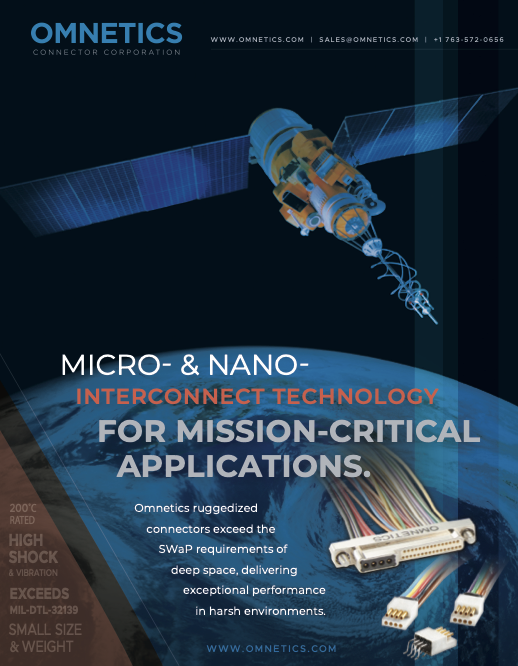The race for global connectivity has spurred a massive boom in the satellite industry, drawing in new players as cutting-edge technology meets the rising demand. The technology now exists to make global, universal, affordable communications coverage a reality, offering up the chance to provide previously unconnected users with connectivity — a chance that many are keenly snapping up.

This has led to a new era for the Non-Terrestrial Networks (NTN) ecosystem — one where businesses can no longer go it alone. Within this new ecosystem, the NTN economy that comes with it as well as the regulatory standards being designed to accommodate the market’s rapid growth, one thing is clear: now is your moment to assert yourself within the NTN economy as a differentiated market leader.
However, how exactly do you seize this moment to differentiate yourself within a hugely competitive and growing market? In our latest whitepaper, Assembling rebel alliances to compete in the new NTN economy,
Cambridge Consultants (CC) explores the three key areas we believe you must address to assert yourself as a satellite market leader, delving into how you can understand, influence and creatively innovate using the latest standards, how developing strategic partnerships can accelerate your journey to market leadership, and the vital importance of harnessing deep tech innovation to differentiate your business.
Exactly what is deep tech? It is a mindset; a bold strategy that harnesses radical science and engineering do what no-one else has before. The transformative solutions this approach produces will grant you with an unassailable commercial advantage through unique technology and protected IP. It’s what we do here at CC. To find out more, download our whitepaper at www.cambridgeconsultants.com/compete-in-new-ntn-economy/?&utm_campaign=ntn-sat-news to read our exclusive insights.
But first, what is necessitating a rethink in strategy for satellite operators?
The New NTN
Economy:
What’s Changed?
Satellites have been used for communications for 60 years, in that time seeing incremental changes in technology that have provided steady improvement and growth. However, in just the last five years, there has been a sudden, dramatic shift as space becomes the new frontier for businesses, corporations and start-ups alike.
From ensuring robust communications and Internet-of-Things (IoT) connectivity to offering high-speed internet and supporting remote work and education, NTNs address some of the most critical needs for today’s digital world, filling the gaps around the globe to offer users better connectivity in both busy cities and remote, unconnected regions.
This opportunity, along with lowering launch costs, has driven an explosion in the number of satellites launched into Low Earth Orbit (LEO), led by companies such as SpaceX and the deployment of their Starlink constellation. As LEO satellites orbit closer to Earth, they can provide reduced latency and faster broadband speeds to make high-speed internet accessible to underserved areas, answering the call for greater connectivity across the globe.
Between the end of 2022 to mid-2024, the total number of satellites launched and on-orbit has risen from 6,905 to 9,900, an increase of 43% in an 18 month period.
Meanwhile, the demand for connectivity continues to rise. Currently, cellular coverage focuses primarily on highly populated areas (driven by the economics of providing coverage) — but as this demand grows, there is a huge opportunity for NTNs to bring this global coverage up to 100%.
This opportunity is only boosted by the increase in technological maturity we’ve witnessed in recent years. The latest innovations mean that more cutting- edge, novel solutions have emerged that allow NTNs to advance in terms of performance, cost and coverage.
These technological leaps have driven competition, innovation and investment in the satellite industry, while the relatively inexpensive launching of LEO satellites has democratized access to high-speed internet, delivering digital inclusion and economic development in previously disconnected regions.
Put in this view, it’s no surprise that so many new players are entering the scene. With this immense opportunity so tantalizingly close, the projected market size of NTNs is set to rise to $124.6 billion in annual satellite services revenue by the end of the decade, attracting an influx of new players. This increasingly competitive environment makes the race to market success ever more urgent — particularly as new regulations and policies are put into place to manage the sudden rise in satellite activity.
How can you begin to create a new strategy that will increase your market value, influence and chances of success amongst the new competition?
First, collaboration will be key.
Connect, Collaborate, Grow
While the previous status quo for the satellite industry was to work alone in your corner of the market, this approach will not be plausible for much longer. Even if you have the technology and regulatory insights — vital areas we explore in our whitepaper — in the complex ecosystem of NTNs, no single company can achieve success alone.
Collaboration through strategic partnerships across the value chain will be instrumental, allowing you to bring together expertise in satellite tech, IoT, network management and beyond, all the while maximizing your opportunities through shared R&D, shared costs and reduced risk.
In other words, it pays to have friends. As the industry becomes saturated with competitors and the skies ever busier, allying yourself with partners to create a network of satellite operators, HAP providers, terrestrial network operators and technology vendors will allow the successful deployment and operation of NTNs that can address the diverse needs of the market at pace.
We’re already seeing these ecosystems begin to form. Take the strategic partnership between Amazon Kuiper and Verizon — these two major organizations are working together to extend 4G/LTE and 5G services to rural areas across the U.S. through a network of LEO satellites, profiting from the integration of Kuiper’s satellite capabilities with Verizon’s terrestrial network.
This partnership also allowed Verizon to support Amazon in navigating the complex regulatory environment of existing telecommunications, meaning all organizations could bring their impressive expertise and resources together to achieve their goals at pace.
Meanwhile, OneWeb’s partnership with Hughes Network Systems leveraged the latter’s expertise in satellite ground network technology alongside the former’s satellite constellation to improve connectivity, reach and service quality of their low-latency broadband services. This not only expanded OneWeb’s market reach by capitalizing on Hughes’ existing customer base and distribution channels, but also hugely accelerated technological innovation thanks to a joint effort around R&D.
As these examples reveal, creating strategic partnerships can give your organization a huge boost, allowing you to address new markets, industries and use cases faster and more effectively.
When finding the correct partner, there will, of course, be much to consider. However, as a starting point, seek out a partner who you align with on an ultimate vision who can also advise on areas where your business may have gaps. This alignment and balance of expertise allows you to work toward a shared goal, fortified and improved by the strengths of one another to address new use cases and portions of the market.
The key takeaway is this: in a vast, competitive and fast-moving market, you’re stronger working as a team. We believe strategic, mutually beneficial partnerships will soon become one of the most valuable assets you can arm yourself with as the market continues to evolve.
Outsourcing to a technology R&D partner is one such way to gain the resources, experience, contacts and unique skillsets that can make your goals a reality. As the deep tech powerhouse of Capgemini, it’s what CC has been accomplishing for 60 years now. By harnessing a deep tech mindset that combines a wealth of multidisciplinary expertise, we can enable new offerings, services and opportunities for your business to go beyond an off-the-shelf, one-size-fits-all approach.
After all, while collaboration will undoubtedly be a key part of getting ahead in the new satellite market, it is only one piece of the puzzle. Along with finding the right partners, you also need to embrace the right cutting-edge technology and harness it creatively within the latest standards to ensure success.

Cambridge Consultants explores how you can use the latest in deep tech innovation, from free space optics to beamforming and AI, alongside how to lead the market through conversations around standards and regulations in our latest whitepaper, Assembling rebel alliances to compete in the new NTN economy. Download now to read our exclusive insights by filling in the form at www.cambridgeconsultants.com/compete-in-new-ntn-economy/?&utm_campaign=ntn-sat-news
www.cambridgeconsultants.com/growth-power-of-deep-tech/.

Stewart Marsh
Author Stewart Marsh is the Head of Aerospace at Cambridge Consultants. He possesses 20+ years of experience in aerospace and telecommunications and has helped companies achieve technology breakthroughs that unlock transformative business value, including a world-first Push- to-Talk satellite service and a beyond visual line-of-sight UAV solution using low-power satellite technology.
Contact Stewart at...
LinkedIn: https://www.linkedin.com/in/stewart-marsh-7412a1/
Email: stewart.marsh@cambridgeconsultants.com



